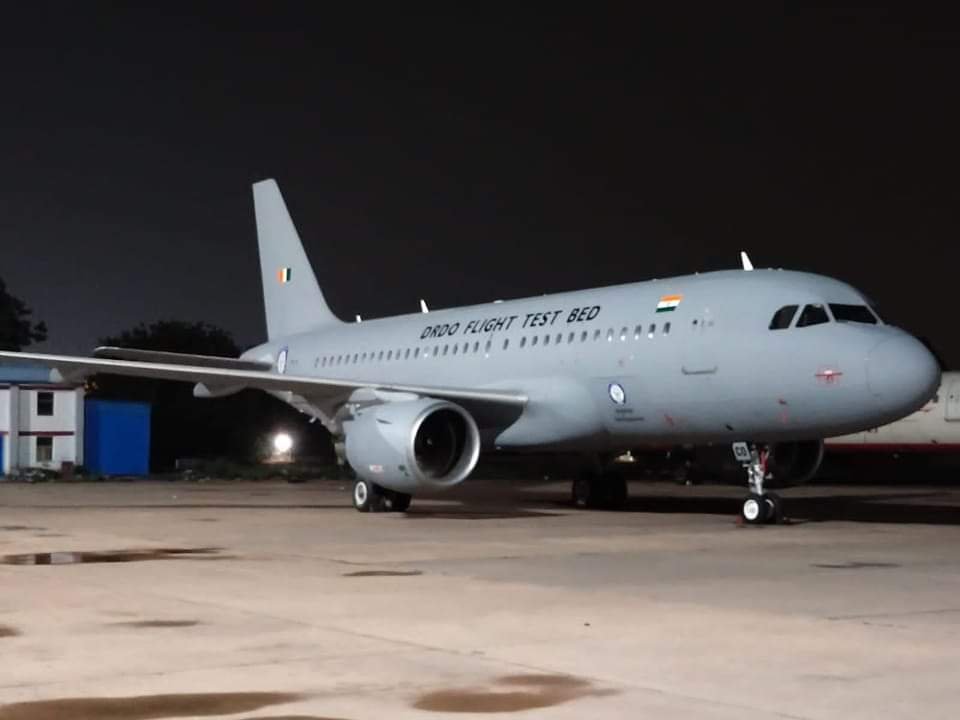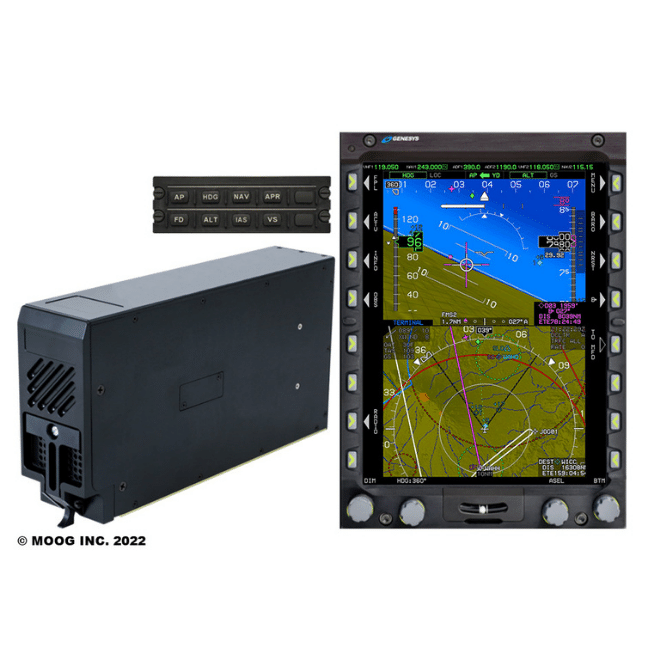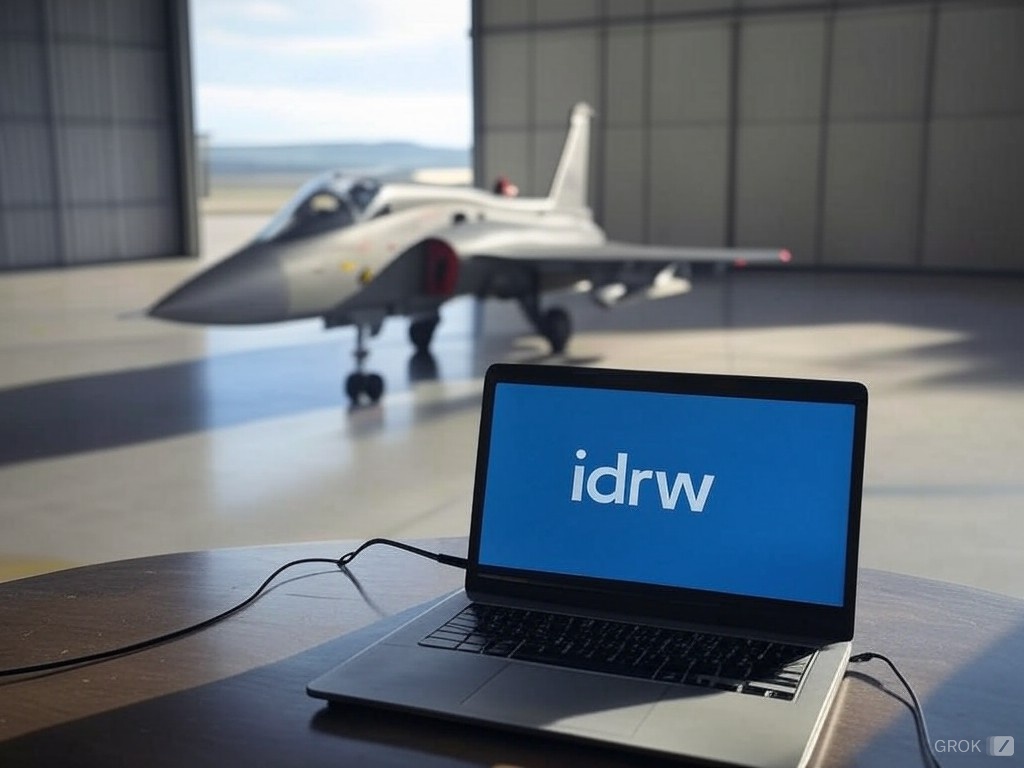SOURCE: RAUNAK KUNDE / NEWS BEAT / IDRW.ORG


India is on the brink of finalizing a crucial defense deal with France for the acquisition of 26 Rafale Marine aircraft, specifically for the Indian Navy. This agreement not only enhances the naval aviation capabilities but also includes a significant order for additional long-range air-to-air Meteor missiles, which will serve both the Indian Navy and the Indian Air Force’s existing fleet of 36 Rafale jets.
The Rafale Marine, a naval variant of the renowned multirole fighter jet, will be deployed on India’s aircraft carriers, notably the INS Vikrant and INS Vikramaditya, augmenting the operational reach and combat effectiveness of the Indian Navy. These aircraft are designed to operate in the harsh marine environment, featuring reinforced structures and adaptations for carrier-based operations.
Continue readingSOURCE: RAUNAK KUNDE / NEWS BEAT / IDRW.ORG


The Indian Army recently conducted rigorous testing of the Garuda 105 Go Anywhere Gun, a groundbreaking mobile artillery system developed by Kalyani Strategic Systems Limited (KSSL). The testing included an airdrop operation from an Indian Air Force (IAF) C-17 Globemaster, showcasing the system’s capability to be deployed swiftly to any required location, thus underlining its strategic deployability and tactical mobility.
Designed as a lightweight, modular, and high-performance howitzer, the Garuda 105 aims to redefine the standards in light artillery with its advanced features. It stands out as a superior alternative to traditional systems like the 106mm Recoilless Rifle, 120mm Mortar, and other 105mm artillery due to its unique attributes, including low-cost precision strike capabilities.
Continue readingSOURCE: RAUNAK KUNDE / NEWS BEAT / IDRW.ORG


The Indian fighter jet development landscape is witnessing a significant technological advancement with the involvement of the DRDO-owned A319 ‘Anusadhan’ as a flying test bed for the Advanced Medium Combat Aircraft (AMCA) program. This move marks a crucial step toward enhancing India’s self-reliance in aerospace technology and military aviation.
The ‘Anusadhan’, originally an Air India A319, was repurposed by the Defence Research and Development Organisation (DRDO) for testing various indigenous technologies. Now, it is set to be instrumental in the testing phase of the AMCA, India’s ambitious fifth-generation stealth fighter jet project. The aircraft’s primary role will involve testing and validating the avionics, sensors, and other systems that will be integral to the AMCA’s performance.
Continue readingSOURCE: AFI


In a move to further strengthen its aerial capabilities, the Nepali Army is reportedly considering the acquisition of additional Dhruv Advanced Light Helicopters (ALH) from India’s Hindustan Aeronautics Limited (HAL). This development would be a continuation of the existing relationship where Nepal already operates three Dhruv Mk III helicopters, which have proven invaluable in the country’s challenging geographic landscape.
The Dhruv Mk III, known for its robust performance, comes equipped with Shakti engines, offering significant power for operations in high-altitude environments. This helicopter model features an advanced glass cockpit and sophisticated avionics, making it a versatile asset for the Nepali Army. With a weight class of 5.5 tons, the Dhruv ALH is designed to perform multiple roles, from troop transport and medical evacuation to reconnaissance and rescue operations. Its capabilities in long-distance flights, vertical climbs, and complex manoeuvring make it particularly suited to the rugged and mountainous terrain of Nepal.
Continue readingSOURCE: AFI


A viral video showcasing the Gridbots VIPER robot in action has highlighted its cutting-edge capabilities in cleaning and inspecting artillery and tank gun barrels. Currently being tested by the Indian Army at select locations, this advanced system is poised to replace the manual cleaning process, bringing efficiency, precision, and automation to a critical maintenance task.
The Gridbots VIPER robot is equipped with the zSCAN, one of the most accurate laser 3D profilometers. This advanced tool allows for thorough inspection and cleaning of gun barrels, addressing the needs of artillery, tank guns, and even submarine and airborne weapon systems.
Continue readingSOURCE: AFI


The Indian Navy has unveiled an ambitious roadmap to bolster its maritime capabilities by 2047, aligning with India’s vision to emerge as a major global power by its centenary of independence. With a focus on self-reliance and indigenization, the Navy aims to commission approximately 94 warships in the next decade, underscoring its commitment to securing the nation’s maritime interests and expanding its blue-water operations.
The Navy’s expansion plans are already underway, with 63 warships currently under construction. Remarkably, 61 of these vessels are being built domestically under the Make in India initiative, reinforcing India’s defense manufacturing ecosystem. The remaining two are being constructed in Russia, showcasing the Navy’s balanced approach to sourcing critical assets.
Continue readingSOURCE: IDRW.ORG.


The Indian Navy’s upcoming Next Generation Missile Vessel (NGMV) design has undergone noticeable changes in the configuration and placement of its BrahMos supersonic cruise missile launchers. A significant reduction in BrahMos missile capacity has also been observed in the new render.
In an earlier render, the NGMV was showcased with Quad-Dual BrahMos Launchers situated behind the ship’s main mast. The Quad Launcher is a specialized inclined-launch configuration developed for Indian Naval ships with space limitations that prevent the integration of vertical launch systems. By utilizing these Quad Launchers, the earlier design allowed the vessel to carry a total of 8 BrahMos missiles in an inclined setup, offering formidable firepower and ensuring versatility in constrained warship designs.
Continue readingSOURCE: IDRW.ORG.


At MAPCON 2024, Megha Engineering and Infrastructures Ltd (MEIL) has taken a significant leap forward in India’s defense capabilities by showcasing their innovative Very Short-Range Air Defence System (VSHORAD). This system, mounted on a lightweight and versatile tripod, is designed as a man-portable air defense system (MANPAD) to counter low-altitude aerial threats effectively.
The VSHORAD system presented by MEIL is a fourth-generation missile with an impressive operational range of up to 6 kilometers. Its design philosophy centers around mobility, speed of deployment, and effectiveness, particularly in challenging terrains like mountainous regions. Here are some of the key features that set this system apart:
Continue readingSOURCE: AFI


The upcoming Aero India 2025 is set to showcase a detailed scale model of the Tejas MK2, revealing significant enhancements and armament configurations that underscore India’s progress in indigenous aerospace technology. The model, which provides a preview of the aircraft’s capabilities, features an array of advanced weaponry and systems tailored for modern combat scenarios.
The Tejas MK2, designed by the Aeronautical Development Agency (ADA) and manufactured by Hindustan Aeronautics Limited (HAL), will feature 11 hardpoints, allowing for a versatile loadout.
Continue readingSOURCE: AFI


In the early 1990s, amidst the geopolitical tensions of the Cold War’s aftermath, India and Russia embarked on an ambitious joint project to develop an air-to-air missile capable of neutralizing high-value airborne targets like AWACS (Airborne Warning and Control System) aircraft. This missile, known as the K-100, had the potential to significantly enhance the Indian Air Force’s (IAF) combat capabilities, particularly when integrated with the Su-30MKI Flanker aircraft. Here’s a look into what transpired with this project.
The K-100, also known by various names such as Izdeliye 172, AAM-L, KS-172, among others, was a project spearheaded by Russia’s NPO Novator and India’s Defence Research and Development Organisation (DRDO). The primary aim was to create an “AWACS killer” missile with an impressive range of 300 to 400 kilometers, which would have been a game-changer in aerial combat dynamics by allowing fighters to engage high-altitude, radar-equipped aircraft from well beyond standard engagement distances.
Continue readingSOURCE: AFI


In a significant revelation in the realm of international business ethics, the United States Department of Justice has reported that the US-based research and design firm, Moog Inc., engaged in bribery to secure contracts with India’s state-owned aerospace and defense company, Hindustan Aeronautics Limited (HAL). According to the orders issued on October 11, 2024, by the Securities and Exchange Commission (SEC), Moog Inc., through its Indian subsidiary Moog Motion Controls Private Limited (MMCPL), orchestrated payments to HAL officials.
The SEC’s detailed investigation into the matter uncovered that in April 2021, HAL had announced a public tender for aerospace actuators, valued at over $1.3 million. Following this announcement, by May 2021, MMCPL employees were actively discussing the logistics of bribing an HAL official. Internal communications revealed a plan to pay a 2.5% commission, with considerations for immediate and staggered payments to ensure the disqualification of other bidders. “By any means, we must take the order of HAL,” was a sentiment echoed among the employees, highlighting the desperation to win the tender.
Continue readingSOURCE: AFI


Meghalaya’s Director General of Police, Idashisha Nongrang, has reported the detection of Bayraktar TB2 unmanned aerial vehicles (UAVs) near the towns of Sohra and Shella in the East Khasi Hills district, close to the India-Bangladesh border. This development has raised significant security concerns, especially given the current political turbulence in Bangladesh.
The UAV in question, identified by the transponder code TB2R1071, was reportedly launched from the Tejgaon Airbase in Bangladesh. The Bayraktar TB2, crafted by the Turkish company Baykar, is renowned for its dual-use capabilities, offering both surveillance and precision strike options. These drones have an operational range of 300 km and can fly for up to 27 hours, making them a formidable asset for reconnaissance and potential combat missions.
Continue readingSOURCE: AFI


A joint operation by the Indian Army and Assam Rifles, under the Spear Corps, has resulted in the recovery of a significant cache of weapons and a surprising piece of technology: a Starlink antenna. The operation, conducted based on specific intelligence, targeted hill and valley regions across several districts in Manipur, including Churachandpur, Chandel, Imphal East, and Kagpokpi.
The security forces coordinated closely with the Manipur Police and other agencies during the search. The recovered weaponry included a range of items, from sniper rifles and automatic weapons to pistols, country-made mortars, single-barrel rifles, grenades, ammunition, and other war-like stores.
Continue readingSOURCE: RAUNAK KUNDE / NEWS BEAT / IDRW.ORG


With the induction of the Tejas MkII fighter jets slated to begin from 2029-30 onwards, the Indian Air Force (IAF) has outlined plans to form a dedicated in-house team to manage feedback, requested changes, and upgrades for the aircraft. This move aims to reduce dependency on Hindustan Aeronautics Limited (HAL), the Original Equipment Manufacturer (OEM) for the Tejas MkII program, particularly for software-related updates and modifications.
According to IAF officials, the current practice involves routing all requests for system changes or software upgrades through HAL, often incurring significant developmental costs. The new in-house approach will streamline this process, allowing the IAF to implement updates more frequently and cost-effectively. This shift is expected to ensure the Tejas MkII fleet remains consistently updated, avoiding delays or gaps often associated with periodic overhauls.
Continue readingSOURCE: RAUNAK KUNDE / NEWS BEAT / IDRW.ORG


The Aeronautical Development Agency (ADA) is contemplating a shift from the 23mm twin-barrelled Gryazev-Shipunov GSh-23 cannon, currently outfitting the Tejas Mk1A and slated for the Tejas MkII, to a higher-calibre gun for the Advanced Medium Combat Aircraft (AMCA) program. The decision comes as the AMCA, with its projected maximum takeoff weight (MTOW) of approximately 27 tons, offers the capability to integrate a more powerful weapon system.
While ADA has not officially disclosed the replacement, sources indicate that two key options are under evaluation A four-barrelled 25mm Gatling-type cannon and a 30mm GSh-301 cannon, renowned for its reliability and firepower.
Continue reading